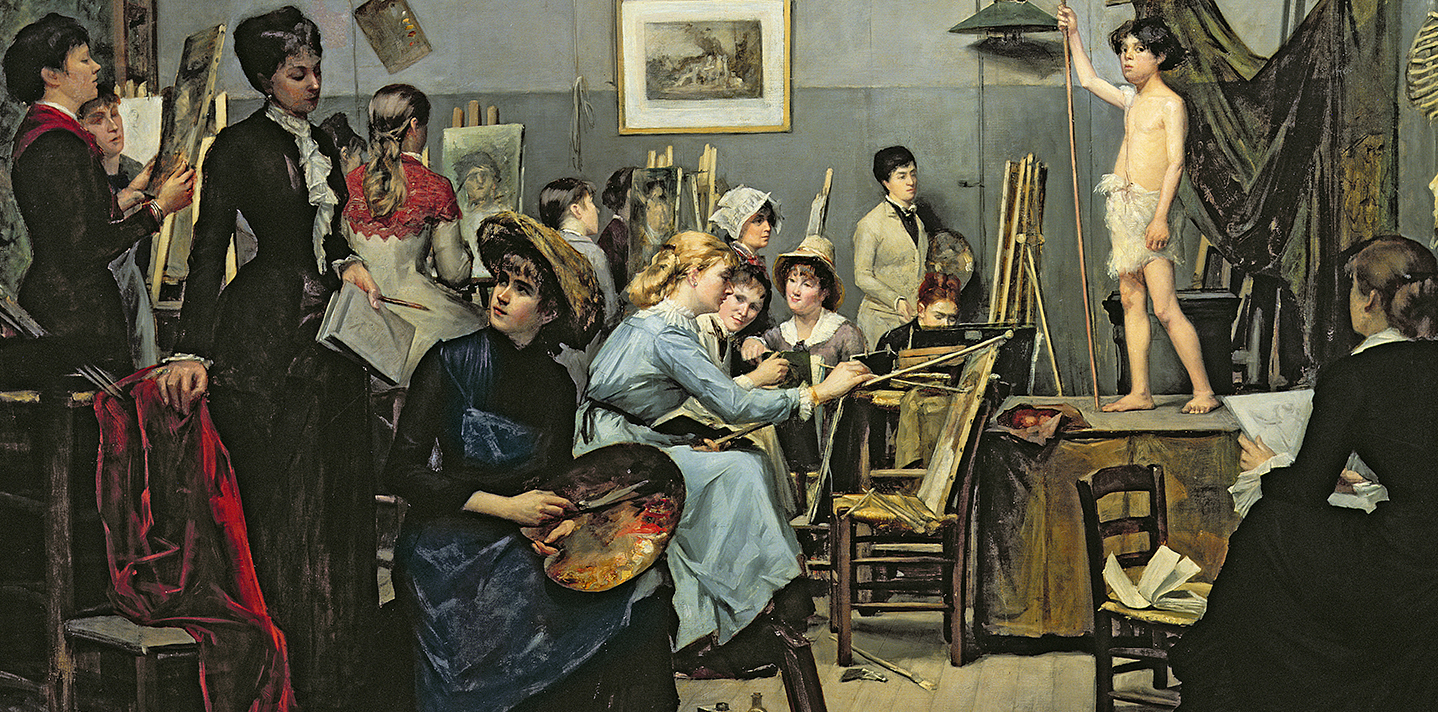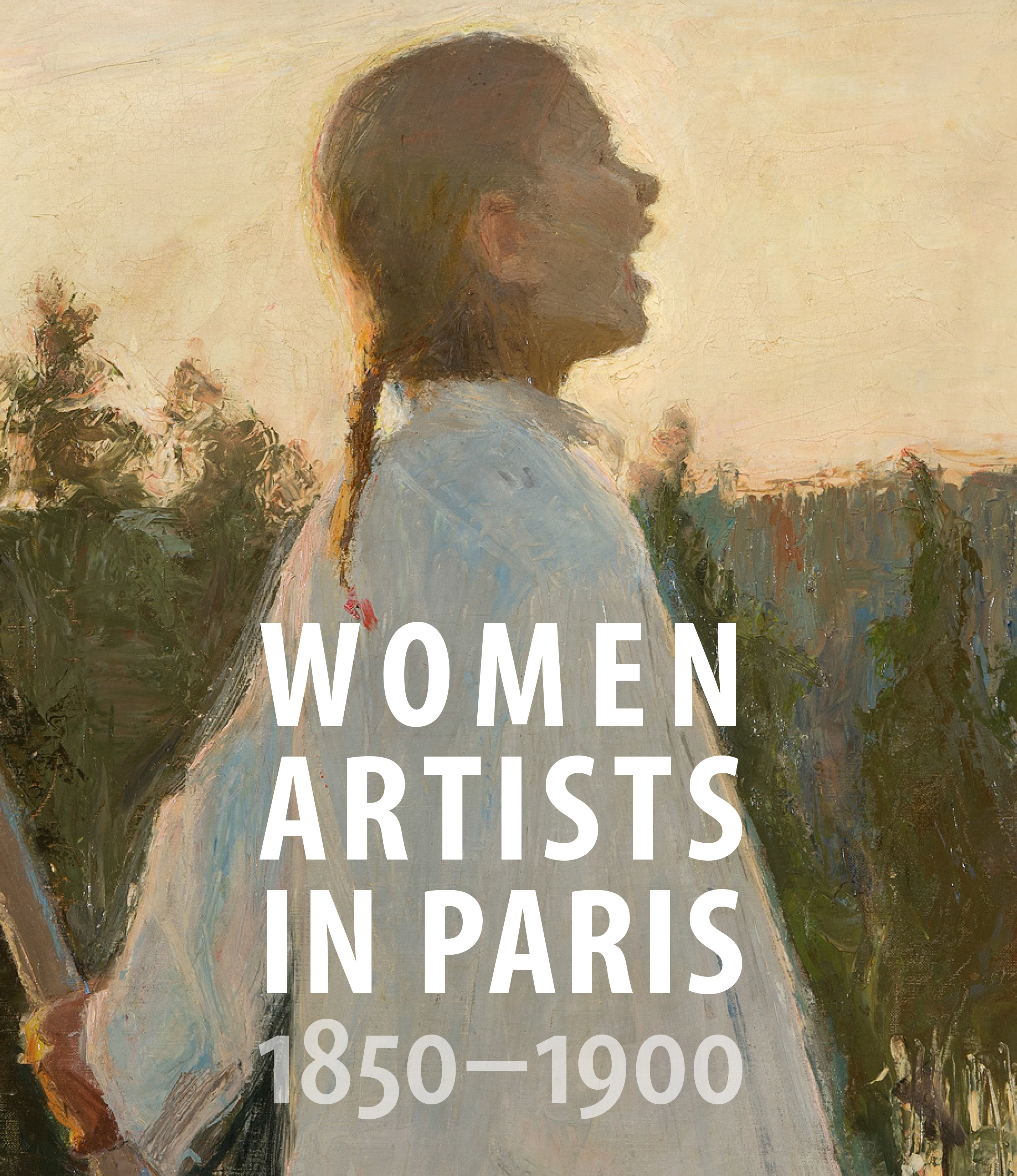
JUNE 9–SEPTEMBER 3, 2018
ABOUT THE EXHIBITION
Berthe Morisot (French, 1841–1895), The Sisters, 1869. Oil on canvas, 20 1/2 x 32 in. National Gallery of Art, Washington, DC. Gift of Mrs. Charles S. Carstairs, 1952.9.2. Courtesy American Federation of Arts
WOMEN ARTISTS IN PARIS, 1850–1900
Between 1850 and 1900, Paris was the center of the art world, attracting women artists from across the globe with its museums, academies, galleries, and dynamic urban life. These groundbreaking women overcame immense obstacles to refine their art and develop their careers, staging what we now recognize as a quiet revolution. They played a pivotal role in the emergence of the first avant-garde movements, such as Impressionism and Symbolism, as well as in the dismantling of the Salon system, where training, exhibitions, and purchases were overseen by the government.
This exhibition illuminates a historical moment marked by the resolute advance of women in the art world. In 1865, Rosa Bonheur became the first woman to be awarded the coveted Légion d’Honneur, the highest decoration in France; in 1881, the Union des Femmes Peintres et Sculpteurs was created; and in 1897, women were finally granted acceptance to the École des Beaux-Arts (School of Fine Arts). Like their male colleagues, women artists grappled with the issues of the day by taking on modern subjects, experimenting with scenes drawn from private life, and capturing startling new impressions. Yet, at the same time, these women drew upon their social difference as a source of artistic inspiration. After study in Paris, many women returned to their home countries with a renewed commitment to their work, and several opened studios or schools, hosted salons, and built female-centric professional networks.
Women Artists in Paris, 1850–1900 reveals remarkable women and the resistance, disappointment, determination, and success reflected in their works.
Women Artists in Paris, 1850–1900 is organized by the American Federation of Arts. Guest curator Laurence Madeline, Chief Curator of French National Heritage, was aided by Suzanne Ramljak, AFA Curator, and Jeremiah William McCarthy, AFA Associate Curator. Presentation of the exhibition at the Clark is coordinated by Esther Bell, Robert and Martha Berman Lipp Senior Curator.
The exhibition is generously supported by the National Endowment for the Arts and by an indemnity from the Federal Council on the Arts and the Humanities. Additional funding is provided by the JFM Foundation, Elizabeth K. Belfer, the Florence Gould Foundation, Monique Schoen Warshaw, the Barbro Osher Pro Suecia Foundation, the Swiss Arts Council Pro Helvetia, Clare McKeon, Steph and Jody La Nasa, Victoria Ershova Triplett, the American-Scandinavian Foundation, and the Finlandia Foundation. Support for the accompanying publication provided by Furthermore: a program of the J. M. Kaplan Fund.
Presentation of Women Artists in Paris at the Clark is made possible by the generous contribution of Denise Littlefield Sobel, with additional support from the Dr. Lee MacCormick Edwards Charitable Foundation.
A fully illustrated catalogue, Women Artists in Paris, 1850–1900, has been published by the American Federation of Arts and Yale University Press. Along with an art-historical overview by curator Laurence Madeline, the catalogue includes essays by Jane R. Becker, collections management associate, Metropolitan Museum of Art; Richard Kendall, former curator at large, Clark Art Institute; Bridget Alsdorf, associate professor, History of Art, Princeton University; and Vibeke Hansen, curator, Nasjonalmuseet, Oslo.






